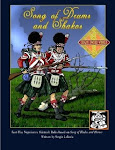Pushed by some interest perceived from this blog and private emails, I asked Marco Gasbarri (Italian SDS and FIW Champion) to briefly describe his style of play and strategy.
Here is what he wrote:
"Squad composition is surely the most important thing, and should be carefully planned according to your playing style. Being an aggressive player, I usually prefer Elite squads.
An example could be the following (Italian) squad I often use:
1 Italian Infantry Officer (54), 1 Italian drummer (16), 5 Italian Guard Velites (165) and 3 French Young Guards (165) for a Total of 400 points
Every turn I try to activate the Young Guards first (and that should not be a problem considering their Q) trying to keep them in cover, better if in a wood.
Then, I move forward the group of Velites, using any possible cover and keeping them always in command. The Officer must always be screened by the drummer.
After a couple of turns, I move the Young Guards in the area where the enemy Command group is deployed: the idea i sto engage the enemy in a close firefight with the Velites (C3), thus allowing the Young Guards to attack the enemy Officer or Standard Bearer.
When the YG attack, never let them alone, but follow them closely with the rest of the soldiers. Otherwise they would probably be killed in no time. This all out attack may expose your Officer, but it is a risk you have to take. A squad like this can win also without a Leader, but only if the enemy has been previously weakened.
Wrapping up:
Use cover
Protect your Officer
When you decide to attack, do it with all available soldiers
Enemy Officer and Standard Bearer are your priority targets
and – clearly – keep your musket loaded!
Good dice to everybody! Marco Gasbarri





Interesting. Thanks for that write-up. We don't play SDS as tournaments here, but it was good to know anyway.
ReplyDeleteDale